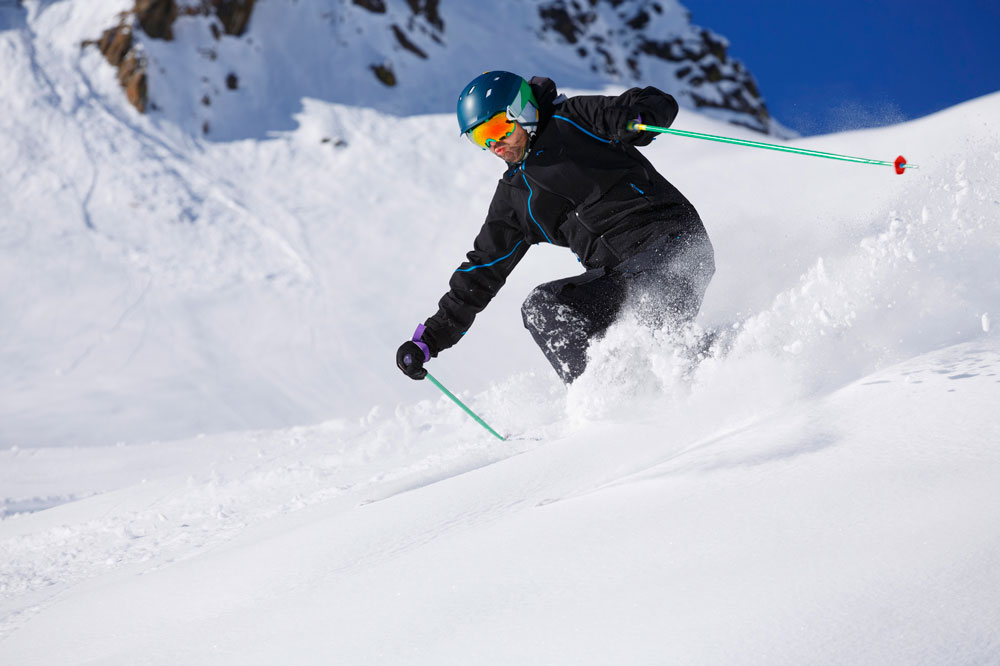
On paper, skiing is a very simple thing. One person, two planks, a snow covered mountain, and the power of gravity; that’s basically it. And yet, scratch below the surface a little and you’ll find a whole world of ski terms, words, phrases, and slang that you might not fully understand. To help you get to grips with the skiing vocabulary, here’s a big list of ski words and their definitions.
Aerials – Ski jumping with an emphasis on freestyle.
Alpine Skiing – Downhill skiing. Not telemark, or cross-country. Just skiing. Down a hill.
Amplitude – Amplitude is all about how much air skiers get out of the pipe. For more on this, check out our 10 reasons why Kevin Rolland is one of the best skiers in the world.
Après-ski – Après-ski doesn’t actually involve any sort of skiing. It instead refers to the social activities and entertainment that occurs after a day on the slope. More often than not, large quantities of booze are involved. The word “après” is French for “after,” and so “après-ski” literally means “after-ski.” Those looking for fun after a day’s skiing, should check out this list of the greatest après-ski resorts in the world.
Artificial Snow – Fake snow. Fired out by ‘snow cannons’ (see below).
Back Country – Skiing for people who love to take things to the extreme. Back country skiing occurs outside the ski resort area on unmarked slopes. Because this type of skiing happens in more remote parts of the mountains, skiers have to climb uphill before coming back down again. In other words, there’s no lifts to get you where you want to be. The risk of getting caught in an avalanche is heightened while skiing in the back country.
Baseplate – The baseplate is one of the most important part of your ski bindings. It sits at the bottom of your bindings, and transfers your movement into the ski or snowboard that you’re using.
Biathlon – A race, and regular event at the Winter Olympics, that brings together cross country skiing and rifle shooting.
Binding – A binding is what keeps you connected to your ski or snowboard. The difference between a ski binding and a snowboard binding is that a ski binding is designed to eject the skier in the case of a fall whereas a snowboard binding keeps the snowboarder locked in no matter what.
Black Run – Steep slope for advanced skiers. Not suitable for beginners.
Blue Run – Beginner ski slops, and a great place to learn the basics. The best beginner ski resorts will have more blue runs than you can shake a ski pole at.
Bombing – Going down a slope recklessly fast. An apparent danger to others.
Bonk – To bounce off an object during freestyle.
Button Lift – Widely considered to be the snowboarding community’s worst nightmare, a button lift consists of a round disc at the end of an extending pole attached to a moving wire. Skiers sit on the round disc, with their legs either side of the pole, and are dragged to the top of the slopes. These lifts are a simple and efficient way to get people back up the pistes.

